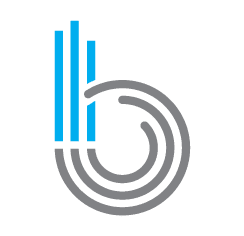Do you ever feel overwhelmed by the number of product choices available today? Whether it’s cars or toothpaste, consumers have more choices than they’re even aware of. If you’re anything like me, sometimes all these choices leave me feeling confused … or even regretful when I finally do make a decision. This idea has been called the “Paradox of Choice.”
The Paradox of Choice
About ten years ago, the Paradox of Choice was a popular theory of consumer behavior, which debunked the old idea that more is better. Instead, more choices — too many in fact — overwhelm shoppers and create anxiety. Ultimately, these shoppers walk away without a purchase because they just could not decide, or they feel deep buyer’s remorse: “Ugh, I could have picked something better!”
Consequently, some companies simplify product choices to avoid this conundrum. Think of Apple’s product branding and packaging motif: clean, simple, and minimalistic. The company uses only a limited spectrum of bright colors, and the new iPhone 6 is available in three quintessential colors, not ten.
On the logistics side, McDonald’s recently announced that it will cut a number of items from the menu. According to the fast food giant, people take longer ordering when there’s an extensive menu, which holds up lines.
The Internet: More Choices, Easier decisions?
A decade after the Paradox of Choice was introduced, we’re living in a different world. Smartphones in hand, the internet gives us access to more product choices than ever before. Yet, it has also adapted in wildly creative and efficient ways to help us sort through (literally) millions of options.
The question remains, does the Paradox of Choice still apply? Are consumers still overwhelmed by all the options today — or have “hundreds of options” become a natural part of the consumer process?
Yelp & Consumer Reviews
On any given day, you have hundreds of restaurant choices (overwhelming, right!?). However, today with sites like Yelp, you can capture the opinions of thousands of consumers in a single star rating (e.g., 4.5 out of 5 stars). Read in-depth reviews, see first-hand photos, and check the credibility of the reviewers. With hundreds of restaurant choices in your area, you can then sort and select them based on multiple criteria (e.g., ratings, cost, type of cuisine, etc.).
The “Yelp model” can be found in other forms (e.g., TripAdvisor) and on any retailer site. It helps us quickly sort through countless product options and make an informed consumer decision. Consumer review sites seem to make the Paradox of Choice much less daunting and, for some, quite enjoyable.
Contextual Advertising
With contextual advertising, consumers receive coupons and promotions based on their location. This advertising trend is quickly growing, as our GPS location determines which ads might be relevant to us.
In theory, ads for nearby business can be pushed out to consumers as they get close. For example, a coupon for a local restaurant appears on my phone as I come within the vicinity. That restaurant, for the moment, becomes both top-of-mind and incentivized. As contextual advertising becomes more prevalent, consumers will be served relevant options without even having to seek them out.
Equally impressive, geo-tracking also filters search results according to your location. Google’s Shopping tab notes nearby stores and their distances for your items. A hundred places may have your items, but most of us will only consider buying at the stores closer by. We narrow our choices depending on proximity, and geo-tracking helps us do that.
Answering the Big Question
With the tools that the internet has enabled, is the Paradox of Choice still valid? Is having more choices really making us more anxious? In the realm of consumer products, I don’t think so. Yes, we have more choices, but we are better at sorting through it all. Ratings, reviews, geo-track: All of it helps us find the diamond among rocks of products and services. With so many tools accessible at the click of a button and tap of a finger, more choices mean no problem!

